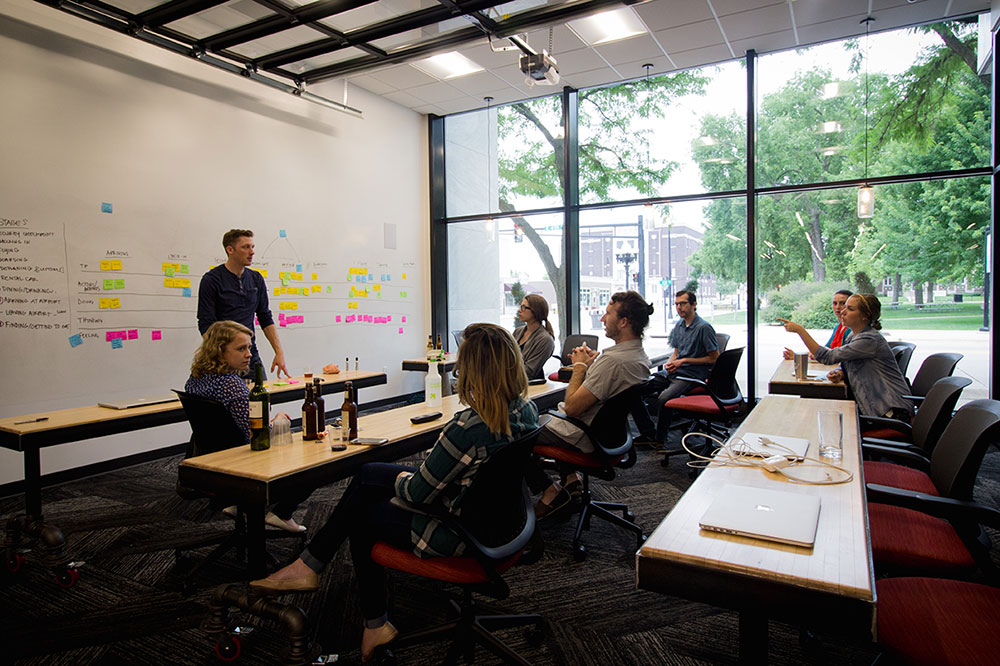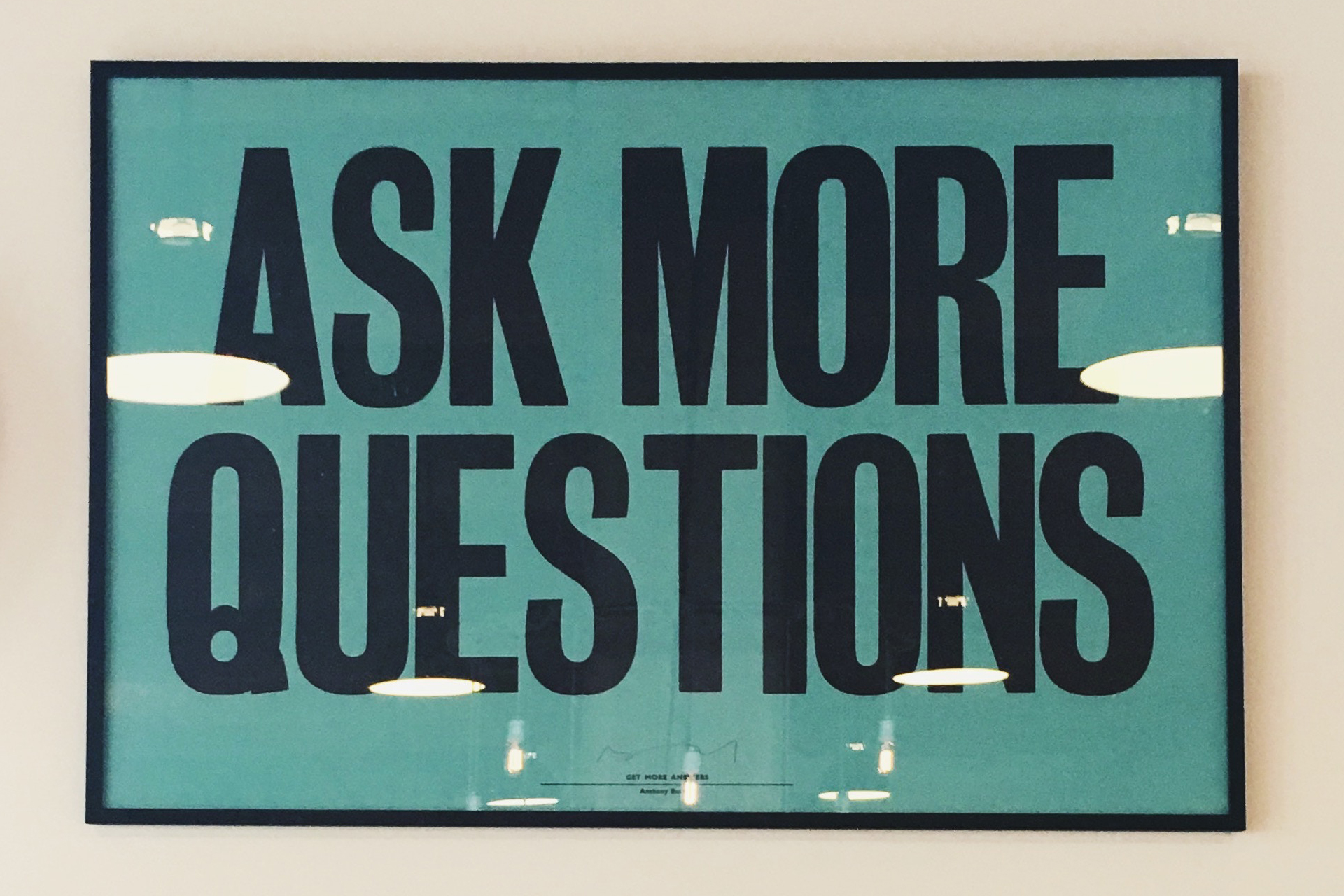Reducing Choice Overload by Anticipating Your Users Goals
7 min read
Imagine it’s getting close to dinnertime, and you’re thinking about what you and your family are going to eat. You toss around the idea of cooking at home, but you would have to get groceries first, so you decide going out to eat might be easier. Now you have to decide which restaurant to go to—do you want something quick and cheap or a little nicer but more expensive?
Next you’re choosing between a booth or a table, what to drink, if you want an appetizer, whether you should eat healthy or get the burger you’re craving, which side sounds good, if you want dessert (of course you do), and how much of a tip to leave.
We encounter thousands of choices each day, some large and some small. We love having options—they’re empowering and give a sense of control. But sometimes too many choices can become overwhelming and lead to something called decision fatigue, a phenomenon where one’s ability to make rational decisions is diminished by having already made too many decisions.
When designing a great product or service, it’s important to account for the number of decisions your customers will have to make and how that might affect not only their experience with your product but also their general well-being.
Reducing Choice Overload
Not only can an overwhelming number of choices mean more decisions to make, but it can actually result in the inability to make a decision at all. This is called choice overload (when you search for something to watch on Netflix until you no longer have time to watch anything before it’s already bedtime).
One way to reduce choice overload for your users is to limit the number of options from which they have to choose. This works especially well when offering things such as different price plans for your product or service. Don’t make customers compare seven pricing options if three will do.
In a study of jam sales, people were 27% more likely to buy jam when presented with only six flavors versus 24 flavors. In this case, “more” does not always mean “better.” A higher number of choices can actually burden customers with having a greater chance of making the “wrong” decision.
While reducing the number of choices for customers may be in their best interests, it’s not always what they think they want. In the study of jam flavors, participants initially found having more choices to be 20% more attractive. People want more choices, but they don’t want to make more decisions.
And sometimes reducing the number of choices we offer may not be possible at all. It seems that the more we innovate, the more options we present to our customers (e.g. buy anything on Amazon, listen to anything on Spotify). So what if innovation actually means providing the number of choices and level of control that users desire while taking out the “decision-making” factor?
The Future is in Anticipatory Design
Spotify offers a world of music at your fingertips, but it would be impossible to filter through it all without the curated playlists they offer. Need an afternoon pick-me-up? Check out their “Re-energize” playlist. Looking for songs to sing in the shower? Look no further than “Songs to Sing in the Shower,” conveniently brought to you in the morning.
For Spotify, catering to listeners doesn’t stop at simply offering mood-based playlists at strategic times. They also keep tabs on what you listen to most and generate personalized playlists to help you keep track of your favorite artists’ recent releases or discover something new each week.
Spotify has determined that many users’ listening habits include extended listening sessions. Because of these habits, Spotify’s newest feature, “Daily Mixes” creates custom, never-ending playlists, sorted by genre, that combine songs you already love with ones you may not have heard before. Each day, the playlists are refreshed with a new set of songs. This takes out all of the decision-making that comes with discovering or rediscovering music you love and leaves users with one decision: when to press play.
Another innovative product, Google’s Nest Learning Thermostat, provides customers with more control over the temperature of their homes than does a traditional thermostat. The device learns homeowners’ schedules—their bedtimes, when they wake up, what time they leave the house for the day—and automatically adjusts the temperature to best suit their comfort while they’re home and conserve energy when they’re not. Nest offers the options and control homeowners want in a thermostat while significantly reducing the amount they have to think about actually controlling it.
Designing an Empathetic Product
People want to be understood. It’s the reason you love going to your favorite restaurant and being asked if you’d like “the usual,” rather than the decision-filled restaurant scenario described above. Or when the server asks if you’d like another drink just before you’ve finished your first. He doesn’t wait until you’ve finished, because he knows that you will, and he anticipates that you’ll want another—he understands you.
It’s impossible to anticipate your users’ needs without first understanding your users. An increasing number of services are finding new ways to understand and anticipate users’ goals and needs to reduce the number of decisions they have to make.
Amazon recommends products they think you’ll like based on your previous purchases and similar buyers’ purchases. Wells Fargo’s ATM remembers if you like your receipt printed or emailed to you. And Hopper recommends the best time to buy flight tickets or tells you to wait for a better price before purchasing, knowing that you want the best price without searching for hours. These services “just get you,” much like Spotify’s custom playlists do.
Monthly subscription boxes are also gaining popularity for some of these same reasons—they understand your favorite kinds of wine, your hobbies, or when you’ll need your next set of razors. It can be stressful to shop through an entire clothing store, whether in-person or online, so there is great appeal in a service that knows your style and tastes and delivers clothes you will like to your doorstep.
But these services only work because they have empathy toward those using them. People want a larger selection of jam, so offer that to them, then understand the kinds they like and narrow their options, so they don’t have to sift through a sea of choices.
It’s impossible to anticipate your users’ needs without first understanding your users.
Understanding your customers is important to anticipate their needs, but it’s also important for deciding when it is and when it isn’t ethical to make decisions on their behalf. Introduce new music users may like without making them search for it? Absolutely. Use their information to narrow their options to only those that benefit your company? Probably not a good idea.
Customer loyalty will come with their trust in your product. Designing an empathetic product means putting your users’ goals above your own. The more you use anticipatory design, the more transparent you must be with your users about how and from where these suggestions are being delivered—and how they can opt out.
Remember that your product should be anticipating your users’ needs, not assuming them. The best way to deliver accurate predictions is to base them on information your user has already given you, similar to the way the Nest Thermostat learns from its users’ habits over time. Above all, be responsible in the way you use others’ information, so that you don’t cause more harm than good.
Designing an empathetic product means putting your users’ goals above your own.
When done right, anticipatory design will work to reduce the number of decisions a user has to make and deliver a trustworthy experience. What if, at your next restaurant experience, you were given recommended menu options to try because you loved the wrap you ordered last time? Or if the next time you were at the grocery store, your banking app reminded you how much you had left in your budget for groceries?
Whether you are providing a product or a service, it’s important to understand and anticipate your user’s needs and goals to give them a better, simpler, and more personalized experience.






